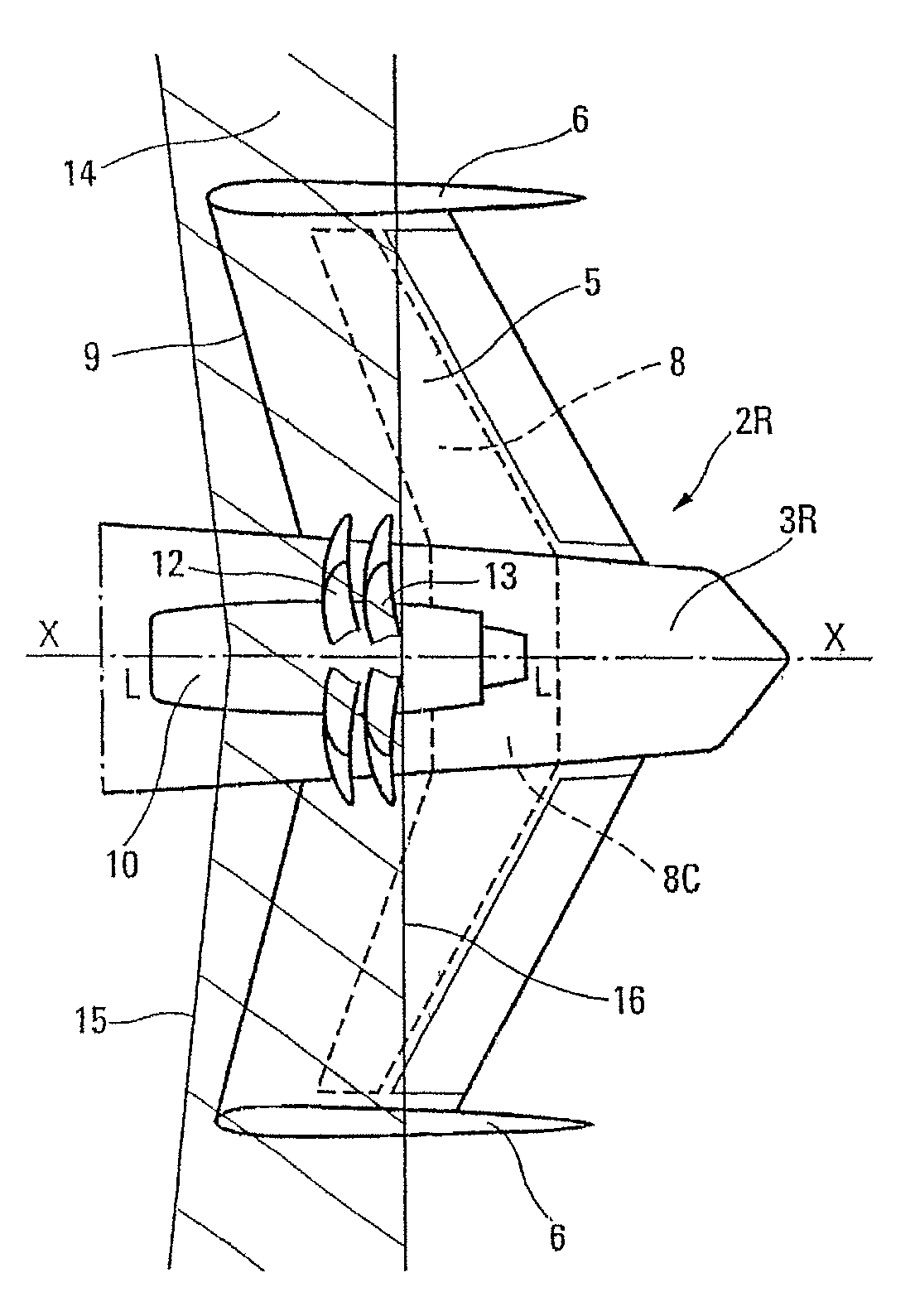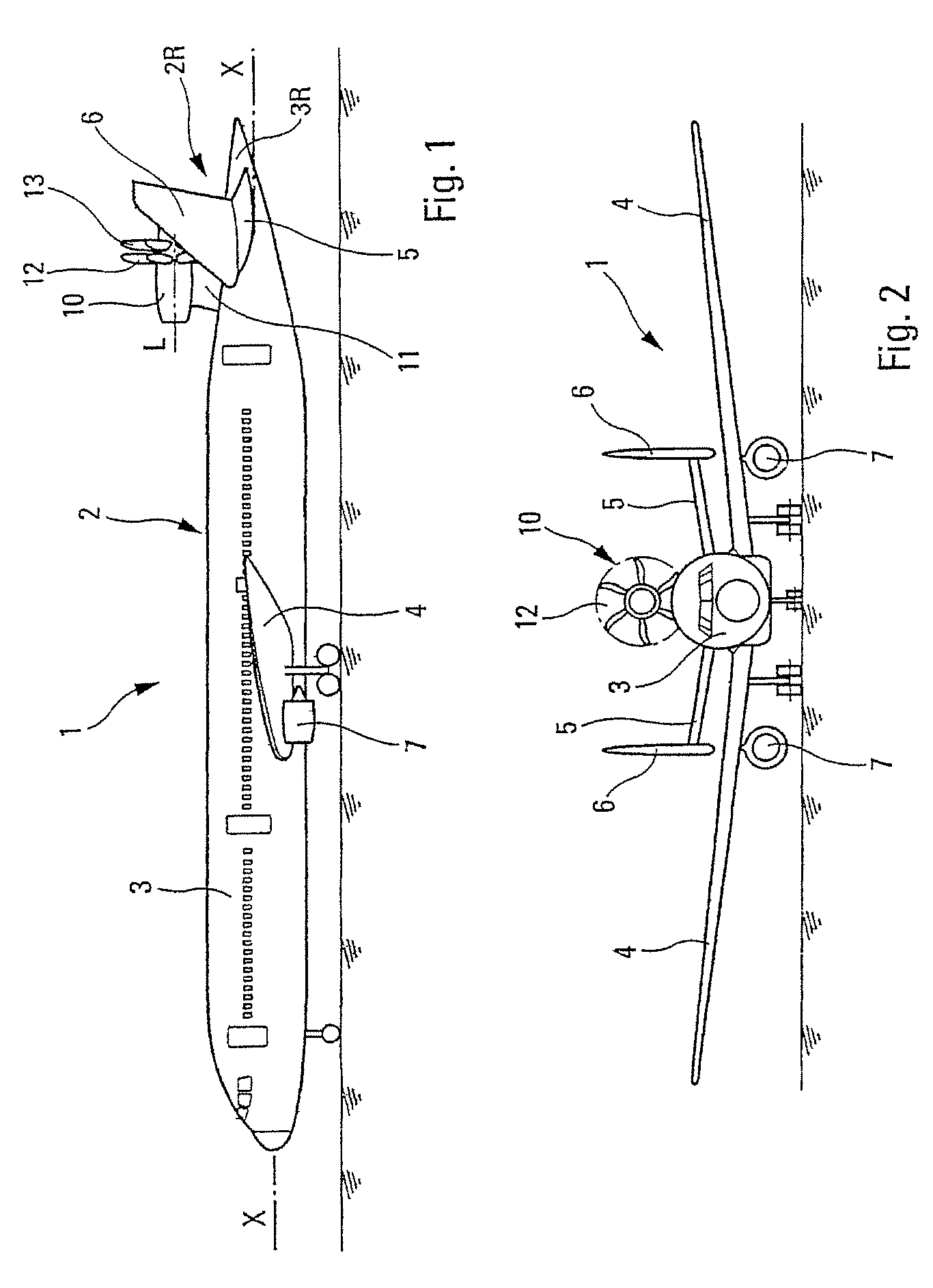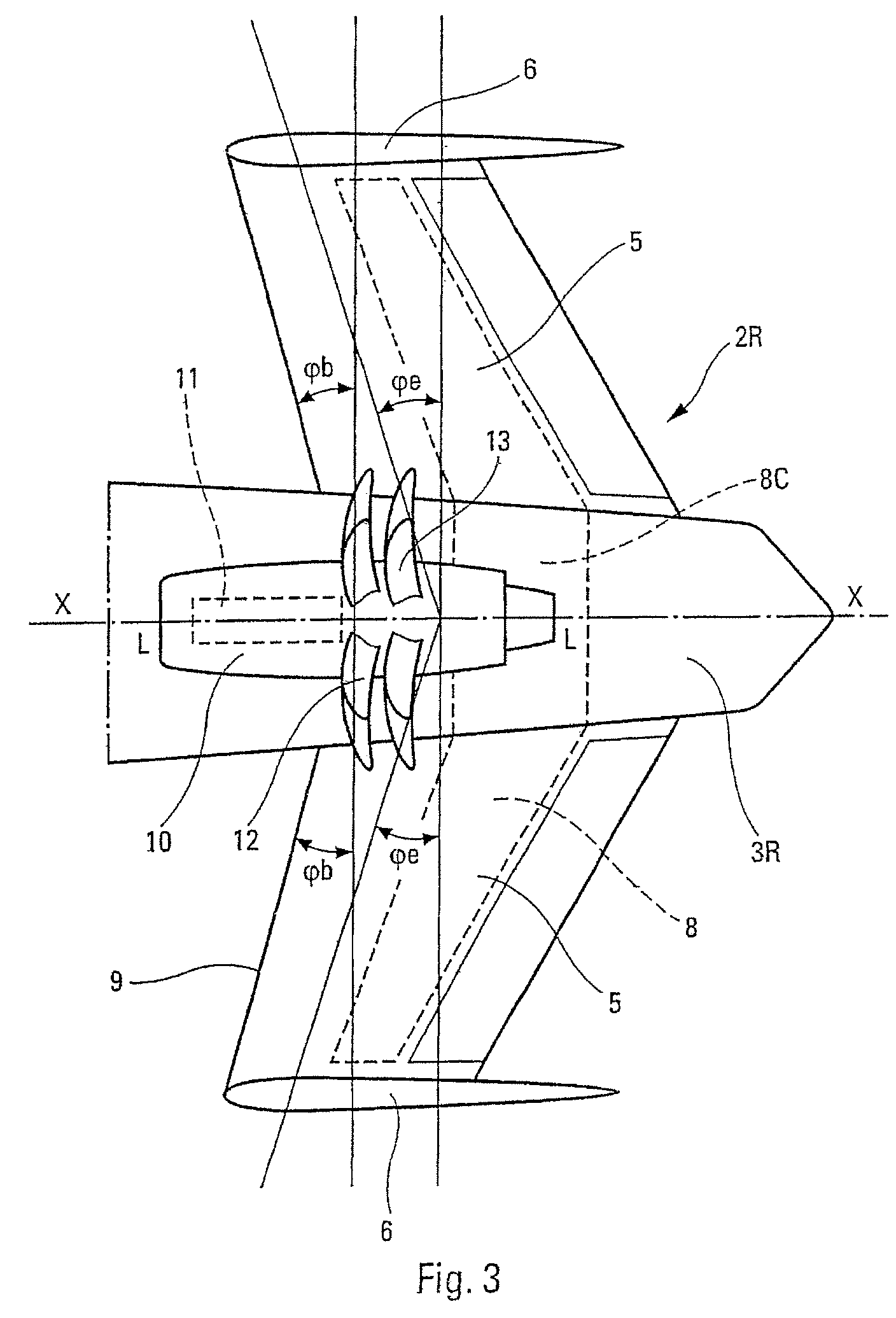Aircraft having reduced environmental impact
a technology of environmental impact and aircraft, which is applied in the direction of airflow influencers, fuselages, transportation and packaging, etc., can solve the problems of increasing the mass and cost of aircraft, affecting performance, and loss of aircraft, so as to reduce power (and therefore noise and fuel consumption), the effect of not being very noisy and low fuel consumption
- Summary
- Abstract
- Description
- Claims
- Application Information
AI Technical Summary
Benefits of technology
Problems solved by technology
Method used
Image
Examples
Embodiment Construction
[0027]The commercial airplane 1, according to the invention and depicted schematically in FIGS. 1 to 3 has a longitudinal axis X-X and comprises a cell 2 which consists of a fuselage 3, wings 4, a horizontal tail plane 5 and two vertical tail planes 6. The wings 4 each bear a turboprop engine 7 and the vertical tail planes 6 are positioned at the ends of the horizontal tail plane 5.
[0028]This horizontal tail plane 5 is of the known THS (or PHR) type with variable angle of inclination and is supported by a tail box 8, the central part 8C of which is housed inside the rear part 3R of the fuselage 3. In addition, the horizontal tail plane 5 is swept forward at an angle φe. Likewise, the leading edge 9 of the horizontal tail plane 5 is swept forward at an angle φb.
[0029]At the rear part 2R of the cell 2 (which rear part 2R comprises the rear part 3R of the fuselage 3, the horizontal tail plane 5 and the vertical tail plane 6) is mounted a propeller engine 10 positioned on the back of th...
PUM
 Login to View More
Login to View More Abstract
Description
Claims
Application Information
 Login to View More
Login to View More - R&D
- Intellectual Property
- Life Sciences
- Materials
- Tech Scout
- Unparalleled Data Quality
- Higher Quality Content
- 60% Fewer Hallucinations
Browse by: Latest US Patents, China's latest patents, Technical Efficacy Thesaurus, Application Domain, Technology Topic, Popular Technical Reports.
© 2025 PatSnap. All rights reserved.Legal|Privacy policy|Modern Slavery Act Transparency Statement|Sitemap|About US| Contact US: help@patsnap.com



